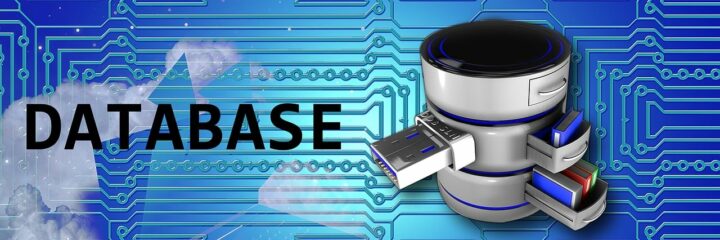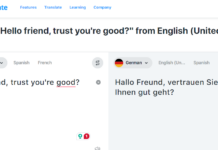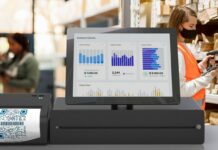 Jumping into the world of data and analytics can be an intimidating prospect for small enterprises. However, with careful consideration as to which database structure is most suitable for your needs, you’ll be well-positioned to unlock the true potential of the information your business collects – and that’s when the magic happens.
Jumping into the world of data and analytics can be an intimidating prospect for small enterprises. However, with careful consideration as to which database structure is most suitable for your needs, you’ll be well-positioned to unlock the true potential of the information your business collects – and that’s when the magic happens.
Although, if you aren’t the tech person in your organization, you may feel overwhelmed at the thought of setting up and managing a database. After all, with so many options to choose from, how do you even start to decide what sort of database structure is best for you?
Fear not! We’ve put together a list of the five most common database structures for small businesses, along with a little bit of information about each so you can make an informed decision about which type is best for your business.
Relational Databases
By far the most popular option, relational databases (also known as relational database management systems, or RDBMS) are designed to store and manage data that is organized into tables. Think of it like a spreadsheet, but with more robust options for organizing and structuring the data.
For example, you can create relationships between tables to easily link data together. This makes it simpler to extract information from multiple tables and perform complex queries on the information quickly. Given their versatility and ease of use, relational databases are well-suited for most small businesses, but there can be vast differences between different types of RDBMS.
For example, if we look at Redshift vs Snowflake comparison, two of the most popular cloud-based RDBMS services, there are distinct differences between the type of infrastructure they support – as well as the pricing structure they offer. With this in mind, make sure you do your research and pick a relational database that best fits your business’s needs.
Non-Relational Databases
Non-relational databases (also known as NoSQL databases) are a great option for businesses that need to store unstructured data. Unlike relational databases, which are based on tabular data, NoSQL databases store data in documents (e.g., JSON or XML files) and can be used to store anything from customer profiles to images, videos, and more.
Furthermore, because NoSQL databases are usually distributed systems – meaning they are spread across multiple servers – they can handle large amounts of data, making them ideal for businesses that need to store and manage huge datasets.
Additionally, since they are optimized for high-speed reads, NoSQL databases can be great for businesses that need to access data quickly, or for those that require dynamic storage capabilities due to frequent changes in data formats or unpredictable growth patterns.
Object-Oriented Databases

Object-oriented databases (also known as object databases, or OODBs) are a unique type of database in that they store data as objects, rather than tables. What this means is that the data is stored as a series of objects that represent real-world entities – such as customers, products, and orders.
This makes object-oriented databases great for businesses that need to store complex data types or those that use object-oriented programming languages (such as C++ and Java).
Additionally, OODBs excel at managing relationships between different objects – such as customer-order associations or product-inventory connections. As a result, they’re well-suited for businesses that need to manage complex data structures or perform intricate queries, such as retail stores, eCommerce sites, and healthcare organizations.
Graph Databases
Graph databases (also known as graph-oriented databases) are a type of NoSQL database that stores data in a graph structure – meaning the data is stored as nodes (or vertices) and edges (or links). This makes it easy to traverse and query the data since you can easily see how individual pieces of data are related.
In many ways, graph databases are the data analysts’ dream’ since they make complex queries a breeze. What’s more, since graph databases are designed to work with unstructured data (such as social media posts or customer profiles) they are great for businesses that need to store and analyze large amounts of data quickly
Furthermore, due to their flexibility, graph databases are great for businesses that need to capture and analyze data in real-time, such as social networks or online marketplaces.
Hierarchical Database
Hierarchical databases (also known as hierarchical DBMS) are a type of database that stores data in a tree-like structure. At the top of the tree is a single root node, and from there each branch can have multiple levels. This makes it easy to traverse the data since it’s organized in a logical fashion.
This ranking order is often referred to as the parent-child relationship, meaning that a node (parent) can have multiple nodes within it (children). This makes hierarchical databases a great choice for businesses that need to store and manage hierarchical data – such as customer hierarchies, product hierarchies, or organizational structures.
Another advantage of hierarchical databases is that they are relatively easy to query as they are structured in a relatively logical and straightforward manner.
Conclusion
As a small business, you may not have the financial resources as some of the larger companies, but that doesn’t mean you can’t find a database that suits your needs.
Whether you need to store large amounts of data quickly and efficiently, manage complex data structures, or capture real-time data, there is a type of database out there for you.
Thanks to the rise of cloud-based applications and SaaS business models, you can now access powerful databases without breaking the bank – giving your business the ability to leverage trend-setting technology and remain competitive in an ever-changing digital world.

















